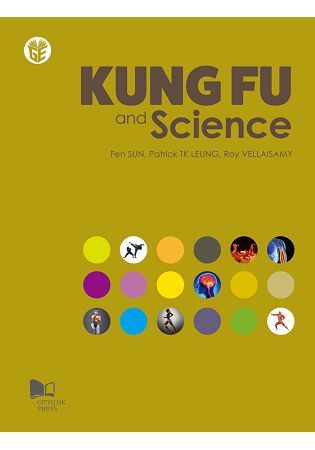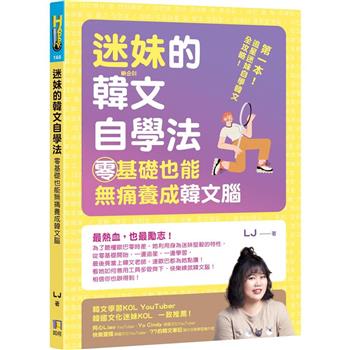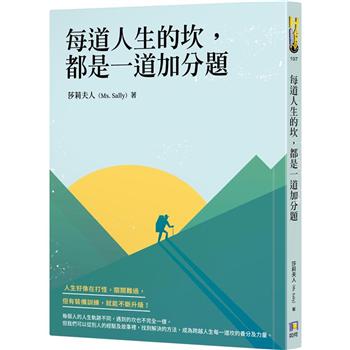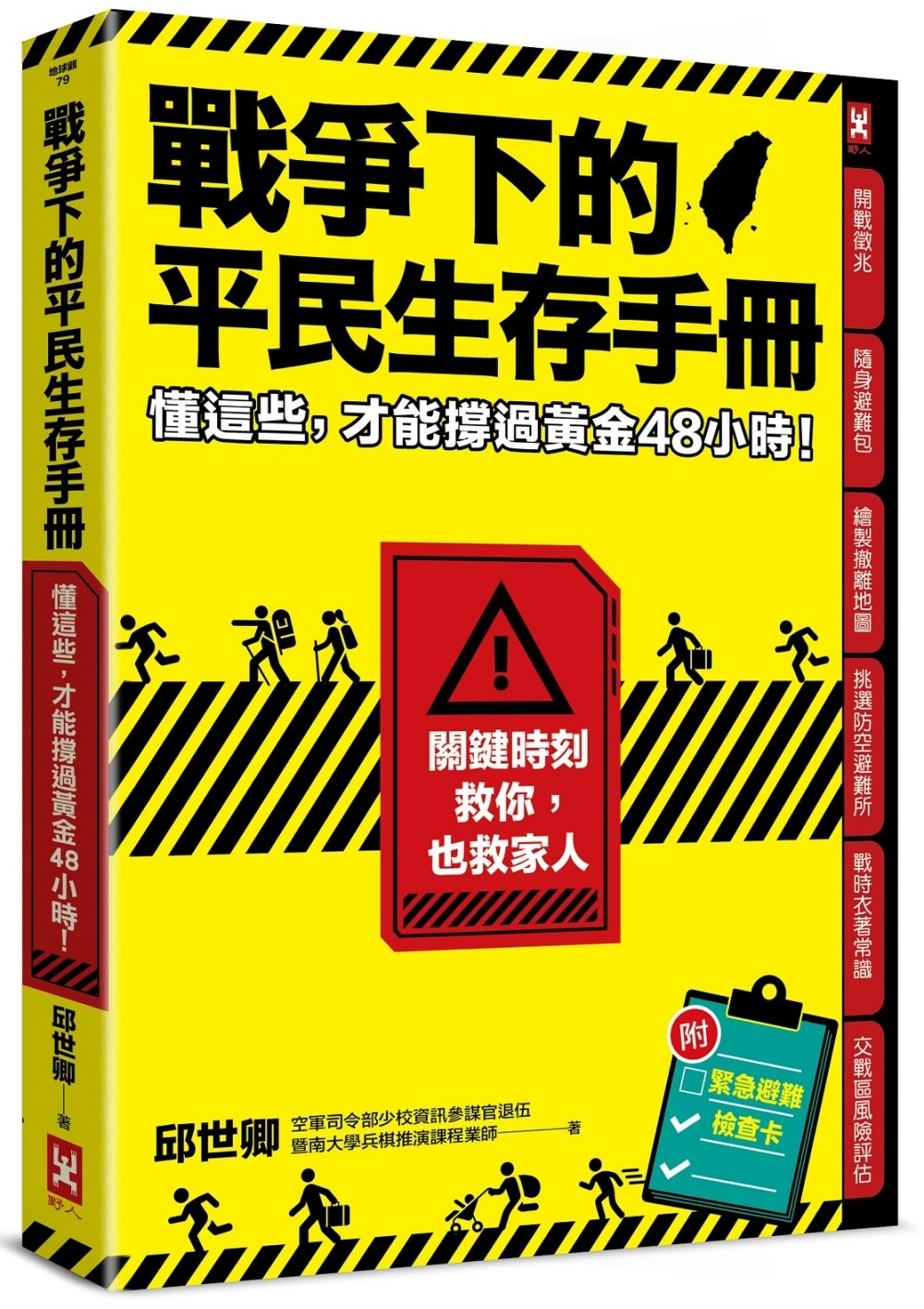Kung Fu has evolved from a traditional means of defence to become a system of attacking and defending oneself, with or without weapons, exercising the body and maintaining good physical and mental health. As such, these practices have found an international following. Yet what has remained a largely unexplored area is the scientific principles behind these martial arts.
This book not only covers the brief history of Chinese martial arts, but also brings together the wisdom of a Kung Fu grand master with a scientist and teacher to explain the scientific reasons why Kung Fu is the powerful practice that it is. Using the principles of physics, biomechanics and biology, with a number of drawings showing some basic postures of Kung Fu, the authors present a deep understanding of how the styles, the specific movements and methods of attack and defence operate.
| FindBook |
有 4 項符合
Kung Fu and Science的圖書 |
 |
Kung Fu and Science 出版社:香港城市大學 出版日期:2016-07-01 語言:英文 規格:平裝 / 178頁 / 15.5 x 21 cm / 普通級/ 全彩印刷 / 初版 |
| 圖書館借閱 |
| 國家圖書館 | 全國圖書書目資訊網 | 國立公共資訊圖書館 | 電子書服務平台 | MetaCat 跨館整合查詢 |
| 臺北市立圖書館 | 新北市立圖書館 | 基隆市公共圖書館 | 桃園市立圖書館 | 新竹縣公共圖書館 |
| 苗栗縣立圖書館 | 臺中市立圖書館 | 彰化縣公共圖書館 | 南投縣文化局 | 雲林縣公共圖書館 |
| 嘉義縣圖書館 | 臺南市立圖書館 | 高雄市立圖書館 | 屏東縣公共圖書館 | 宜蘭縣公共圖書館 |
| 花蓮縣文化局 | 臺東縣文化處 |
|
|
圖書介紹 - 資料來源:博客來 評分:
圖書名稱:Kung Fu and Science
內容簡介
作者介紹
作者簡介
Fen SUN
Fen Sun is a PhD. student at East China Normal University of Shanghai. Fen Sun’s major is Chinese philosophy and her research direction is Chinese philosophy and religion. She has published some articles on this topic. Fen Sun previously worked as a teaching assistant at City University of Hong Kong.
Patrick TK LEUNG
Sifu Leung Ting Kwok (Patrick) is the founder, chairman and principal instructor of Soft Wing Chun Academy (Hong Kong), and the vice chairman of World Wing Chun Union, the Hong Kong Wing Chun Union and Ving Tsun Development Council.
He was one of the first people to become a Wing Chun Senior Instructor and is a Qualified Referee certificate holder of Ving Tsun Athletic Association, which was founded by Grand Master Ip Man.
After forty years of training, Grand Master Ip Chun awarded him a certificate to teach for Ip Chun worldwide. He is a seventh Duan holder, Examiner, and Instructor of National Wu Shu Duan Wei, China. He has been teaching Wing Chun for over thirty years in renowned organisations.
Sifu has also appeared at seminars around the world and been interviewed by Philippine, Spanish and British publications.
Roy VELLAISAMY
Roy Vellaisamy is a scientist of molecular electronics, molecular self-assembly, photonics, nano-materials science, bio-electronics, renewable energy (solar and fuel cells) and printed electronics. He started his research on light-emitting materials during his PhD at Nagpur University, India and moved to explore the growth of various organic molecules for light emitting transistors (LET) in the ISMN, Council for National Research, Bologna. In 2004, he joined the Department of Chemistry at The University of Hong Kong and he focused on various molecular materials for electronic device applications.
Currently he is with the Department of Physics and Materials Science, City University of Hong Kong leading a group of physicists, chemists and engineers for the fabrication of functional self-assembly materials to devices and integration of such devices for printed electronics and energy harvesting devices.
He is also an accomplished Kung Fu practitioner and teaches the GE course “Science in Chinese Kung Fu” in City University of Hong Kong.
Fen SUN
Fen Sun is a PhD. student at East China Normal University of Shanghai. Fen Sun’s major is Chinese philosophy and her research direction is Chinese philosophy and religion. She has published some articles on this topic. Fen Sun previously worked as a teaching assistant at City University of Hong Kong.
Patrick TK LEUNG
Sifu Leung Ting Kwok (Patrick) is the founder, chairman and principal instructor of Soft Wing Chun Academy (Hong Kong), and the vice chairman of World Wing Chun Union, the Hong Kong Wing Chun Union and Ving Tsun Development Council.
He was one of the first people to become a Wing Chun Senior Instructor and is a Qualified Referee certificate holder of Ving Tsun Athletic Association, which was founded by Grand Master Ip Man.
After forty years of training, Grand Master Ip Chun awarded him a certificate to teach for Ip Chun worldwide. He is a seventh Duan holder, Examiner, and Instructor of National Wu Shu Duan Wei, China. He has been teaching Wing Chun for over thirty years in renowned organisations.
Sifu has also appeared at seminars around the world and been interviewed by Philippine, Spanish and British publications.
Roy VELLAISAMY
Roy Vellaisamy is a scientist of molecular electronics, molecular self-assembly, photonics, nano-materials science, bio-electronics, renewable energy (solar and fuel cells) and printed electronics. He started his research on light-emitting materials during his PhD at Nagpur University, India and moved to explore the growth of various organic molecules for light emitting transistors (LET) in the ISMN, Council for National Research, Bologna. In 2004, he joined the Department of Chemistry at The University of Hong Kong and he focused on various molecular materials for electronic device applications.
Currently he is with the Department of Physics and Materials Science, City University of Hong Kong leading a group of physicists, chemists and engineers for the fabrication of functional self-assembly materials to devices and integration of such devices for printed electronics and energy harvesting devices.
He is also an accomplished Kung Fu practitioner and teaches the GE course “Science in Chinese Kung Fu” in City University of Hong Kong.
目錄
Part I: Overview
1.What is Kung Fu?
2.How does Kung Fu relate to the sciences?
3.What are the physical benefits of practising Kung Fu?
4.Is Kung Fu only good for the body?
5.What are the different functions of Kung Fu?
6.What is the origin and historical development of Kung Fu?
7.How did Chinese weapons evolve throughout history?
Part II: Starting Out
8.What is the most important lesson in Kung Fu?
9.What is the centre of gravity?
10. What is equilibrium?
11. What is supporting area?
12. What is the importance of the centre of gravity?
13. What are stability angle and equilibrium?
14. How do Kung Fu masters keep their balance while falling?
15. How does the basic stance of Wing Chun differ from other Kung Fu stances?
16. How do our bodies generate forces? What are their functions?
17. Are forces in physics the same as forces in Chinese martial arts?
18. Why do Kung Fu masters possess so much strength?
19. What are the different kinds of Jing?
20. What is the most important body part in the practice of Kung Fu?
21. Why do Kung Fu masters practise their routines over and over again?
22. What is the use of the wooden dummy in Wing Chun?
Part III: Style
23. How many Kung Fu styles are there?
24. Why are some schools of martial arts lost to the world?
25. Is Shaolin really the birthplace of all Chinese Kung Fu?
26. What are the different schools of Shaolin Kung Fu?
27. What are the 72 Shaolin secret arts?
28. Are there specific schools of Kung Fu suitable for certain age groups or prevention of certain diseases?
29. Why are the internal arts so important?
30. What is Qi?
31. Is Qi a material?
32. How is Qi manipulated through breathing?
33. What is Qi Gong?
34. What is the difference between hard Qi Gong and soft Qi Gong?
35. Is hard Qi Gong scientific?
36. What is the science behind iron palm?
37. What is headbutt? Is it related to Qi Gong? What is the science behind it?
38. How does Qi influence Jing (power and force) in martial arts?
39. Could I teach myself Qing Gong?
40. How can practising Nei Gong help me be a better fighter?
41. What are the differences between internal boxing and external boxing?
42. Which one is more powerful, internal or external boxing?
43. Which is more powerful, Shaolin boxing or its descendant Wu Dang Nei Jia boxing?
44. What are the different schools of Wu Dang?
45. Why do Kung Fu moves imitate nature or animals?
46. What is Shaolin five-form boxing?
47. What are the five elements?
48. Other than Shaolin five-form boxing, is there any Kung Fu that imitates animals or nature?
49. What do Yin and Yang mean?
50. How can Yin and Yang be applied in martial arts?
51. How do you read a Ba Gua (eight trigrams) map?
52. How are the eight trigrams applied in Kung Fu?
53. What is drunken style?
54. What is Tai Chi? How does Tai Chi influence Kung Fu?
55. Why is Tai Chi Quan so slow and calm?
56. What is Dian Xue and how does it work?
57. How many vital points are there in the human body?
58. Does Xue stay at the same position all the time?
Part IV: Ultimate Battle
59. What is the scientific theory every Kung Fu practitioner must learn in order to fight with others?
60. Does a knowledge of anatomy make a better Kung Fu fighter?
61. What is the application of force couple in Kung Fu?
62. What is the application of the lever principle in Kung Fu?
63. Is it possible for a slim man to defeat a stout man?
64. How do you give a strong punch?
65. How can you hit your opponent with the greatest effect?
66. Can the force of one’s punch be increased?
67. Is it possible that the force of a punch from a slim man is the same as from a stout man?
68. Which is the most powerful Quan (punch) of all?
69. Is it possible to “attack a naked blade empty-handed”?
70. How does the law of inertia apply to Kung Fu?
71. What are the benefits of the law of inertia?
72. How does one save effort during combat?
73. What is the importance of the centreline in Wing Chun?
74. Why do martial artists refuse to kill their enemies?
1.What is Kung Fu?
2.How does Kung Fu relate to the sciences?
3.What are the physical benefits of practising Kung Fu?
4.Is Kung Fu only good for the body?
5.What are the different functions of Kung Fu?
6.What is the origin and historical development of Kung Fu?
7.How did Chinese weapons evolve throughout history?
Part II: Starting Out
8.What is the most important lesson in Kung Fu?
9.What is the centre of gravity?
10. What is equilibrium?
11. What is supporting area?
12. What is the importance of the centre of gravity?
13. What are stability angle and equilibrium?
14. How do Kung Fu masters keep their balance while falling?
15. How does the basic stance of Wing Chun differ from other Kung Fu stances?
16. How do our bodies generate forces? What are their functions?
17. Are forces in physics the same as forces in Chinese martial arts?
18. Why do Kung Fu masters possess so much strength?
19. What are the different kinds of Jing?
20. What is the most important body part in the practice of Kung Fu?
21. Why do Kung Fu masters practise their routines over and over again?
22. What is the use of the wooden dummy in Wing Chun?
Part III: Style
23. How many Kung Fu styles are there?
24. Why are some schools of martial arts lost to the world?
25. Is Shaolin really the birthplace of all Chinese Kung Fu?
26. What are the different schools of Shaolin Kung Fu?
27. What are the 72 Shaolin secret arts?
28. Are there specific schools of Kung Fu suitable for certain age groups or prevention of certain diseases?
29. Why are the internal arts so important?
30. What is Qi?
31. Is Qi a material?
32. How is Qi manipulated through breathing?
33. What is Qi Gong?
34. What is the difference between hard Qi Gong and soft Qi Gong?
35. Is hard Qi Gong scientific?
36. What is the science behind iron palm?
37. What is headbutt? Is it related to Qi Gong? What is the science behind it?
38. How does Qi influence Jing (power and force) in martial arts?
39. Could I teach myself Qing Gong?
40. How can practising Nei Gong help me be a better fighter?
41. What are the differences between internal boxing and external boxing?
42. Which one is more powerful, internal or external boxing?
43. Which is more powerful, Shaolin boxing or its descendant Wu Dang Nei Jia boxing?
44. What are the different schools of Wu Dang?
45. Why do Kung Fu moves imitate nature or animals?
46. What is Shaolin five-form boxing?
47. What are the five elements?
48. Other than Shaolin five-form boxing, is there any Kung Fu that imitates animals or nature?
49. What do Yin and Yang mean?
50. How can Yin and Yang be applied in martial arts?
51. How do you read a Ba Gua (eight trigrams) map?
52. How are the eight trigrams applied in Kung Fu?
53. What is drunken style?
54. What is Tai Chi? How does Tai Chi influence Kung Fu?
55. Why is Tai Chi Quan so slow and calm?
56. What is Dian Xue and how does it work?
57. How many vital points are there in the human body?
58. Does Xue stay at the same position all the time?
Part IV: Ultimate Battle
59. What is the scientific theory every Kung Fu practitioner must learn in order to fight with others?
60. Does a knowledge of anatomy make a better Kung Fu fighter?
61. What is the application of force couple in Kung Fu?
62. What is the application of the lever principle in Kung Fu?
63. Is it possible for a slim man to defeat a stout man?
64. How do you give a strong punch?
65. How can you hit your opponent with the greatest effect?
66. Can the force of one’s punch be increased?
67. Is it possible that the force of a punch from a slim man is the same as from a stout man?
68. Which is the most powerful Quan (punch) of all?
69. Is it possible to “attack a naked blade empty-handed”?
70. How does the law of inertia apply to Kung Fu?
71. What are the benefits of the law of inertia?
72. How does one save effort during combat?
73. What is the importance of the centreline in Wing Chun?
74. Why do martial artists refuse to kill their enemies?
序
序
The Chinese, “Kung Fu” means perfection or hard work, which exemplifies the practice-based nature of Kung Fu. It has a long history and has branched into hundreds of different styles and schools, most of them originating from the Shaolin monastery for Buddhist monks where they use Kung Fu to maintain their health. Today it is popular across a broad spectrum of people for a wide variety of reasons.
This book arose from the course “Science in Chinese Kung Fu” I teach in City University of Hong Kong. As a scientist and a practitioner, it is something which has always intrigued me. As there are so many practitioners of Kung Fu around the world it was thought that this might be of interest to a wider audience or indeed that it may appeal to those with an interest in Kung Fu but who have felt, perhaps, that it lacked a solid scientific basis.
We discuss the scientific flavour of Kung Fu and explain how science makes Chinese Kung Fu more effective and more versatile. This book is interdisciplinary in nature, and includes aspects of classical mechanics to understand how Kung Fu works in action. In addition, bio-mechanics, a concept used to describe martial arts in motion, is explained using fundamental physics concepts. Finally, the book offers a different view, based on science, of how Kung Fu can help to maintain physical and mental health.
This is a collaboration of three parties. Fen Sun carried out much research and writing, particularly on the historical, civilisation and ethics parts. T. K. Leung is a Wing Chun Sifu (master) who gave advice on postures, stances and real combat situations for which I then provided the scientific interpretation.
The Chinese, “Kung Fu” means perfection or hard work, which exemplifies the practice-based nature of Kung Fu. It has a long history and has branched into hundreds of different styles and schools, most of them originating from the Shaolin monastery for Buddhist monks where they use Kung Fu to maintain their health. Today it is popular across a broad spectrum of people for a wide variety of reasons.
This book arose from the course “Science in Chinese Kung Fu” I teach in City University of Hong Kong. As a scientist and a practitioner, it is something which has always intrigued me. As there are so many practitioners of Kung Fu around the world it was thought that this might be of interest to a wider audience or indeed that it may appeal to those with an interest in Kung Fu but who have felt, perhaps, that it lacked a solid scientific basis.
We discuss the scientific flavour of Kung Fu and explain how science makes Chinese Kung Fu more effective and more versatile. This book is interdisciplinary in nature, and includes aspects of classical mechanics to understand how Kung Fu works in action. In addition, bio-mechanics, a concept used to describe martial arts in motion, is explained using fundamental physics concepts. Finally, the book offers a different view, based on science, of how Kung Fu can help to maintain physical and mental health.
This is a collaboration of three parties. Fen Sun carried out much research and writing, particularly on the historical, civilisation and ethics parts. T. K. Leung is a Wing Chun Sifu (master) who gave advice on postures, stances and real combat situations for which I then provided the scientific interpretation.
|










